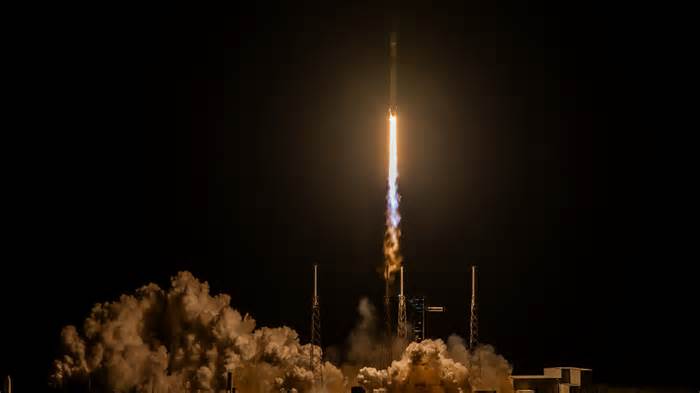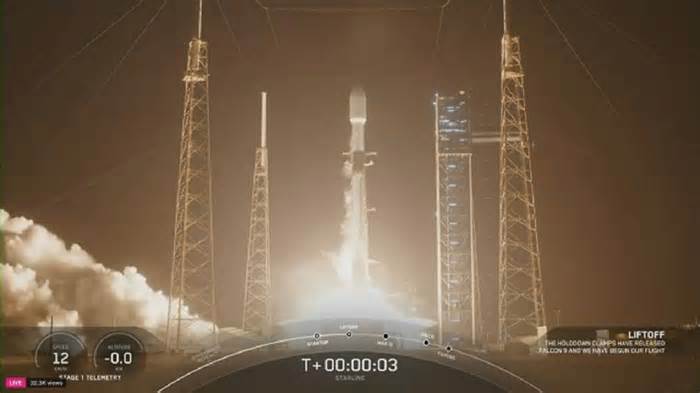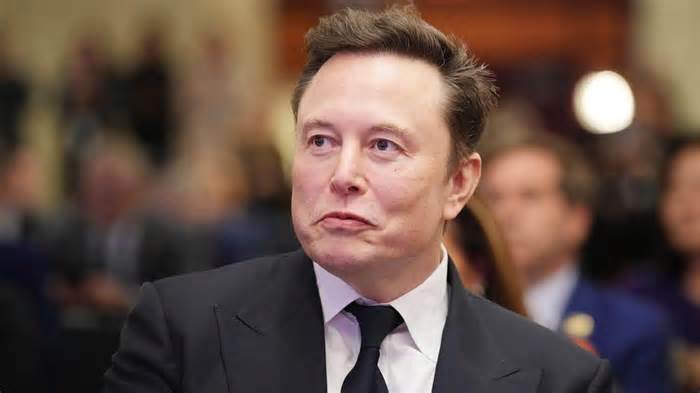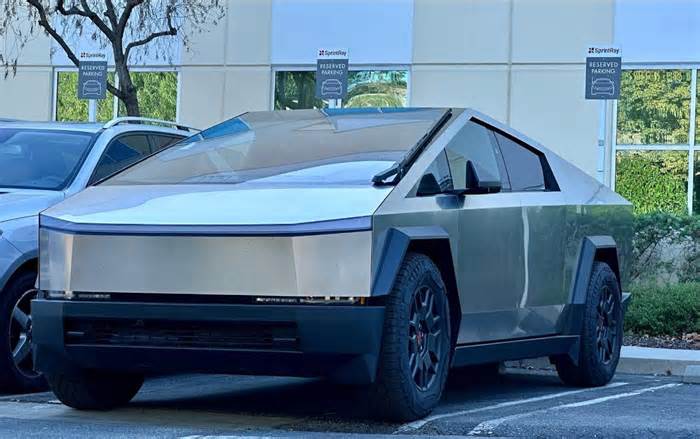
China challenges Elon Musk in space, seeking to break Starlink's dominance
- by Neue Zürcher Zeitung
- Nov 21, 2024
- 0 Comments
- 0 Likes Flag 0 Of 5

Share
The U.S. company SpaceX has far outstripped any rivals in space. Since 2019, the firm founded by Elon Musk has deployed more than 6,500 communication satellites in near-Earth space. Dozens more are being added every week. Flying in low orbits, its satellites bring internet service to regions that lack terrestrial reception.
According to the firm, the Starlink network is now used by more than 4 million customers in more than 100 countries. Musk still has little serious competition in the sector. Apart from Starlink, only OneWeb, which belongs to the French Eutelsat Group, is currently in operation.
Source: Celestrack (as of Nov. 15, 2024)
But the business is changing rapidly. Efforts to set up similar fleets of satellites are currently underway around the world. If the various projects’ announcements are taken at face value, tens of thousands of communication satellites could soon be orbiting the Earth, producing a new space race. At a superficial level, this competition is solely about economic interests. In reality, it is about much more, however. The outcome of this race could transform the geopolitical environment.
China’s big plans
China in particular is making a concerted effort to carve out a strong position in the space sector. Within the People's Republic, various entities have plans to establish three independent mega-constellations, each consisting of more than 10,000 satellites. While Beijing was initially slow to recognize the strategic value of satellite internet service, the government is now racing to close the gap with SpaceX’s Starlink.
The country’s nascent providers have taken a first step. In August, a Chinese rocket launched the first 18 satellites of the Spacesail Constellation into near-Earth space. Another 18 followed in October. By 2027, the provider intends to have 1,296 satellites operational, with the goal of providing global coverage. The long-term plan is to expand the constellation to 14,000 satellites. This would be comparable to the Starlink network, which SpaceX intends to expand to 12,000 satellites.
Source: Celestrack (as of Nov. 15, 2024)
China’s push has come in part due to lessons drawn from the war in Ukraine. «The war in Ukraine has shown how important it is to be networked,» says Sarah Wiedemar, a research associate at the Center for Security Studies at ETH Zurich. Wiedemar is studying how commercial actors are contributing to the militarization of space.
On the day of the Russian invasion, state-linked hackers sabotaged the connection to a commercial satellite used by the Ukrainian security forces. Kyiv's troops were thus forced to switch to other means of communication. Later, Musk's satellites helped to reestablish the interrupted communication lines, especially near the front.
According to reports in spring 2024, the Russian invaders have also used Starlink to communicate on Ukrainian territory. Reports indicate that the Russian army brought thousands of Starlink antennas into the country for this purpose. Wiedemar says the lesson is thus clear: «The civil and military benefits of commercial satellite systems cannot be separated.»
Links between China’s private and public sectors
Like the United States, China is turning to the private sector to develop its satellite internet sector. The country's satellite networks are being established by commercial actors. However, these firms are closely linked to state institutions. The Spacesail Constellation is being constructed by a company supported by the Shanghai city government. The state's influence is even more obvious in the planned Guowang satellite network. The China Satellite Network Group managing the project is owned by the state.
The strategic importance of satellite networks has been clear since the war in Ukraine underscored their military applications. However, Beijing also sees these networks as an instrument to boost its soft power. Since 2015, China has funneled investments into digital infrastructure in developing countries through its Digital Silk Road initiative. On the African continent in particular, Chinese firms control a significant share of the terrestrial communication networks. A Chinese satellite network would represent a logical extension of this outreach.
China has watched with distrust as SpaceX has begun gaining market share in Africa. According to Business Insider Africa, Starlink is currently available in 13 African countries. For this reason alone, Beijing is anxious to launch a Chinese equivalent as swiftly as possible. The government believes that the existing Chinese-built terrestrial infrastructure will encourage African countries to adopt Chinese satellite internet services as well. This may be a particularly appealing proposition for autocratic countries, as Chinese providers may be more willing than SpaceX to censor content.
China needs more and cheaper rockets
It remains to be seen whether this strategy will bear fruit. Starlink has a head start of five years. Making up this ground will require considerable effort. The satellite factory in Shanghai can currently produce 300 Spacesail satellites per year. SpaceX produces between 1,000 and 1,500 satellites in the same time.
However, the real bottleneck is not the satellites, but the rockets needed to launch them into space. China already conducts more rocket launches per year than any country other than the United States. Last year, it launched 67 rockets into space. This year, more than 100 launches are planned. This impressive increase offers clear testimony to China's ambitions in space. But it is not enough to set up two or even three mega-constellations with 10,000 communication satellites each.
Another drawback is the fact that China's rockets are not reusable. SpaceX is able to launch its Starlink satellites into space at unbeatable prices only because the first stage of its Falcon 9 rockets can be used as many 20 times. Moreover, the firm’s prices will continue to fall. Its successor to the Falcon 9, the Starship, is already in the advanced testing stages. This heavy-duty rocket is so powerful that it will be able to carry as many as 100 Starlink satellites into space per launch. In addition, the entire rocket has been designed to be reused.
China – like the rest of the world – has nothing on hand to rival this capability. The Chinese government has recognized the problem, however. For years, it has been encouraging private and state space companies to develop reusable rockets. Progress is beginning to show. In September, private Chinese company Landspace successfully tested a rocket stage able to carry out a vertical landing. The rocket, called Zhuque-3, is set for its maiden flight next year.
The Chinese space program’s primary contractor, the China Aerospace Science and Technology Corporation, is also developing a reusable rocket. As Ars Technica recently wrote, this appears to be a clone of SpaceX’s Starship. It would not be the first time that China has tried to copy American rocket technology. This rocket, called Long March 9, is slated to fly for the first time in 2033.
Competition for radio frequencies
However, China cannot and will not wait that long. Control over the future use of near-Earth space is already being established today. The electromagnetic frequencies used by the satellite fleets are allocated by the International Telecommunication Union on a first-come, first-served basis. Any provider that arrives too late can expect to go home empty-handed.
This regulation creates an incentive to reserve frequencies as a precautionary measure. And in fact, China has done precisely this. However, the ITU has also issued rules to prevent actors from stockpiling radio frequencies. For example, each applicant must deploy its first satellite into space within seven years of making its reservation. If it fails to do so, its license will expire. Following this first deployment, the applicant then has a further seven years to complete its constellation.
China therefore has an interest in stationing as many satellites in near-Earth space as quickly as possible. However, this also applies to other actors in the sector. Last year, for example, the American company Amazon launched two prototypes of its Kuiper satellites into space. Over time, it plans to put an additional 3,236 into orbit. After a difficult round of negotiations, the EU is also trying to make a mark in the sector. In October, the European Commission awarded a European consortium of companies a contract to develop a constellation of 290 satellites called Iris2 by 2030.
China, the EU and the various commercial providers all have different goals. But each of these actors have one thing in common: They want to prevent the near-Earth space race from becoming a solo run for SpaceX.
Follow the NZZ science editorial team on Twitter.
Latest articles
Please first to comment
Related Post
Stay Connected
Tweets by elonmuskTo get the latest tweets please make sure you are logged in on X on this browser.
Sponsored
Popular Post
Middle-Aged Dentist Bought a Tesla Cybertruck, Now He Gets All the Attention He Wanted
32 ViewsNov 23 ,2024
Tesla: Buy This Dip, Energy Growth And Margin Recovery Are Vastly Underappreciated
28 ViewsJul 29 ,2024






 Energy
Energy



















